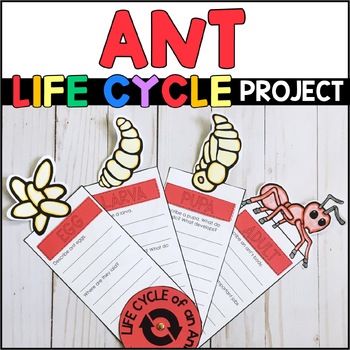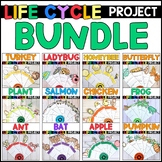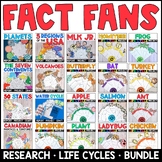Life Cycle of an Ant Project - Insect Research - Ant Craft
- PDF
What educators are saying
Also included in
- Are your students ready to begin research projects on the life cycles of plants and animals? Are you looking for a rigorous yet engaging writing project that integrates science? These interactive projects allow students to research the life cycle of an apple, ant, bat, bee, butterfly, chicken, frogPrice $48.00Original Price $60.00Save $12.00
- Are you looking for engaging research projects for your students? Are you ready to study life cycles of animals and plants? Maybe some students are ready to jump in with both feet while others still need quite a bit of guidance. These no-prep interactive projects are just what you need to release rPrice $80.00Original Price $101.00Save $21.00
Description
Surprise your students with a research project about everyone's favorite picnic guest - the ant! This no-prep ant life cycle project guides students as they research the life cycle of an ant, take notes, write a report, and complete the ant craft. This project is a great writing component supplement to your science unit on insects. Many teachers have reported using this ant project with their own classroom ant farm!
This life cycle of an ant project works well in writing centers, as group work, and as an independent project. Students use the images of the egg, larva, pupa, and adult ant to guide their research. The note taking sheets are filled with writing prompts to help students write, and the publishing pages (in the fan format) match the prewriting sheets exactly, make the publishing process simple!
This Ant project includes:
- a list of recommended resources for teachers
- ant life cycle word wall cards
- ant life cycle graphic organizer for students to label
- graphic organizers for taking notes
- publishing pages in the fan format
- complete answer keys
Process:
Students use the provided note-taking sheets to research the ant's life cycle.
They then transfer the notes onto the fans. This project gives students the opportunity to research, note-take, publish, cut and color. When done, students have a resource that shows the never-ending life cycle of the ant!
This project is ideal for:
- practicing note-taking
- introducing research
- for center work
- fast finishers
- independent projects
- group work
- as a supplement to your science unit on insects
See what teachers are saying!
❤️ "Excellent resource! Scholars enjoyed research and presenting the research on this fan booklet ... Very pleasing to the eye and great asset to hallways." Kimberly P.
More Spring Life Cycle Projects
⭐ Life Cycle of a Bee: Fact Fan Research Project
⭐ Life Cycle of a Butterfly: Fact Fan Research Project
⭐ Life Cycle of a Chicken: Fact Fan Research Project







